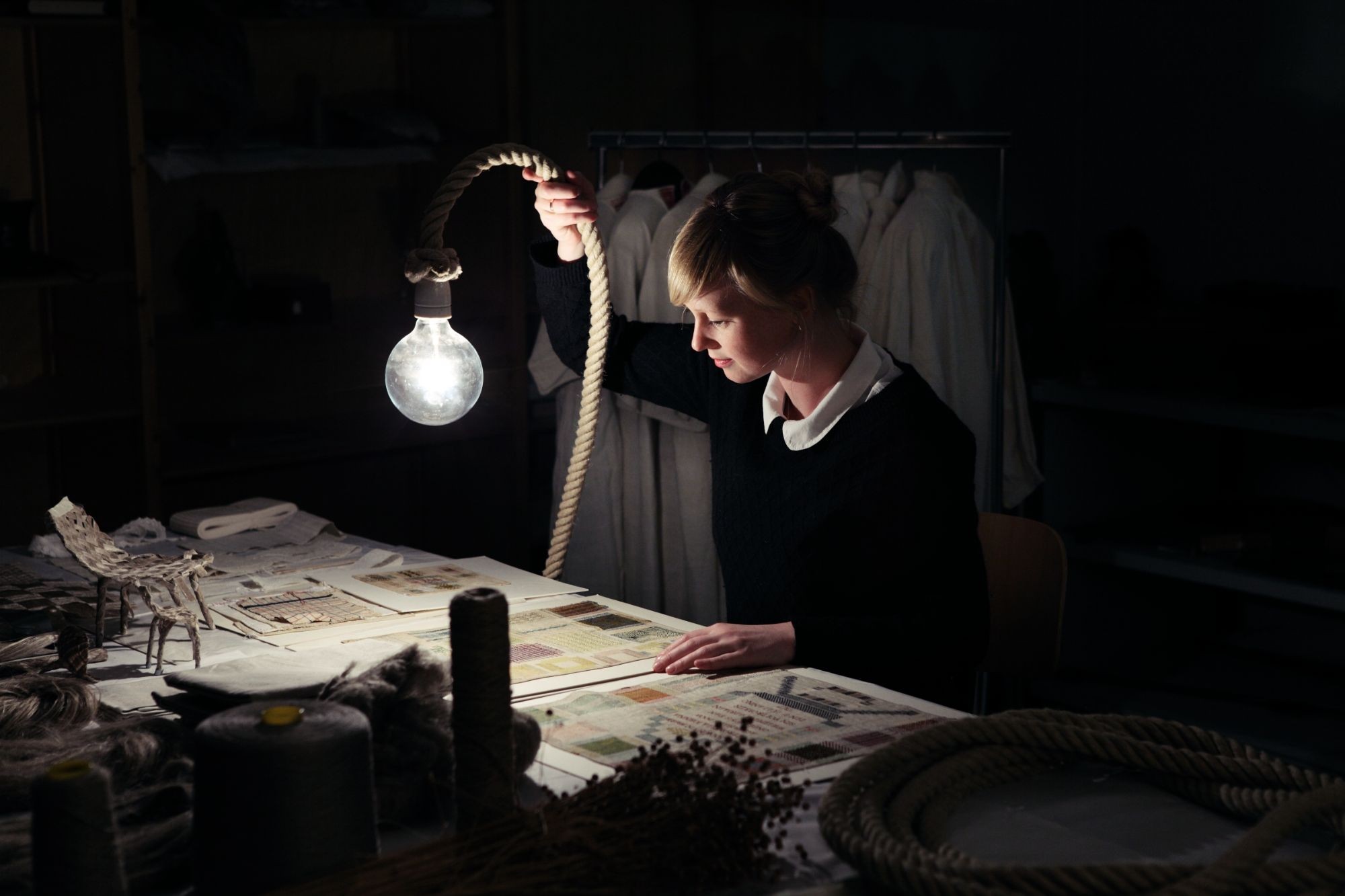Christien Meindertsma: Όταν η έρευνα και το design συμπορεύονται
DS.WRITER:
Christina Ioakeimidou
Πηγή Κεντρικής Εικόνας: zeeuwsmuseum.nl
Μεταποίηση, εναλλακτικές πρώτες ύλες, στροφή στην αξιοποίηση «ξεχασμένων» υλικών και η βαθύτερη σχέση αντικειμένου-καταναλωτή, είναι κάποιες από τις πρακτικές που χαρακτηρίζουν την άκρως σχολαστική δουλειά της Christien Meindertsma. Συνδυάζοντας την έρευνα με το design, η Ολλανδή designer αποδεικνύει πως, ό,τι περιστοιχίζει την καθημερινότητά μας, μπορεί να χρησιμοποιηθεί κατάλληλα, ούτως ώστε να περισωθεί από την εναπόθεσή του στον κάλαθο των αχρήστων. Έτσι, στα βιβλία Checked baggage (2004) και PIG 05049 (2007) –το πρώτο, μάλιστα, ήταν μέρος της διπλωματικής της στο Design Academy Eindhoven–, η ίδια ασχολείται επιμελώς με την καταγραφή αντικειμένων και την πρότερη και μετέπειτα χρήση τους. Αναλυτικότερα, στο βραβευμένο λεύκωμα PIG 05049 περιλαμβάνονται προϊόντα, που η χρήση της πρώτης ύλης πολλών από αυτά ήταν άγνωστη, όπως στις περιπτώσεις των φαρμάκων, τσιγάρων, βιοντίζελ κ.α. Η άκρως λεπτομερής καταγραφή φέρνει στο φως, για άλλη μια φορά, την κυκλική διάσταση στην κατασκευή των προϊόντων και καταδεικνύει την ολική εκμετάλλευση κάθε μέρους του ζώου για τη δημιουργία ενός αντικειμένου, του οποίου η προέλευση -για πολλούς από εμάς- είναι άγνωστη.
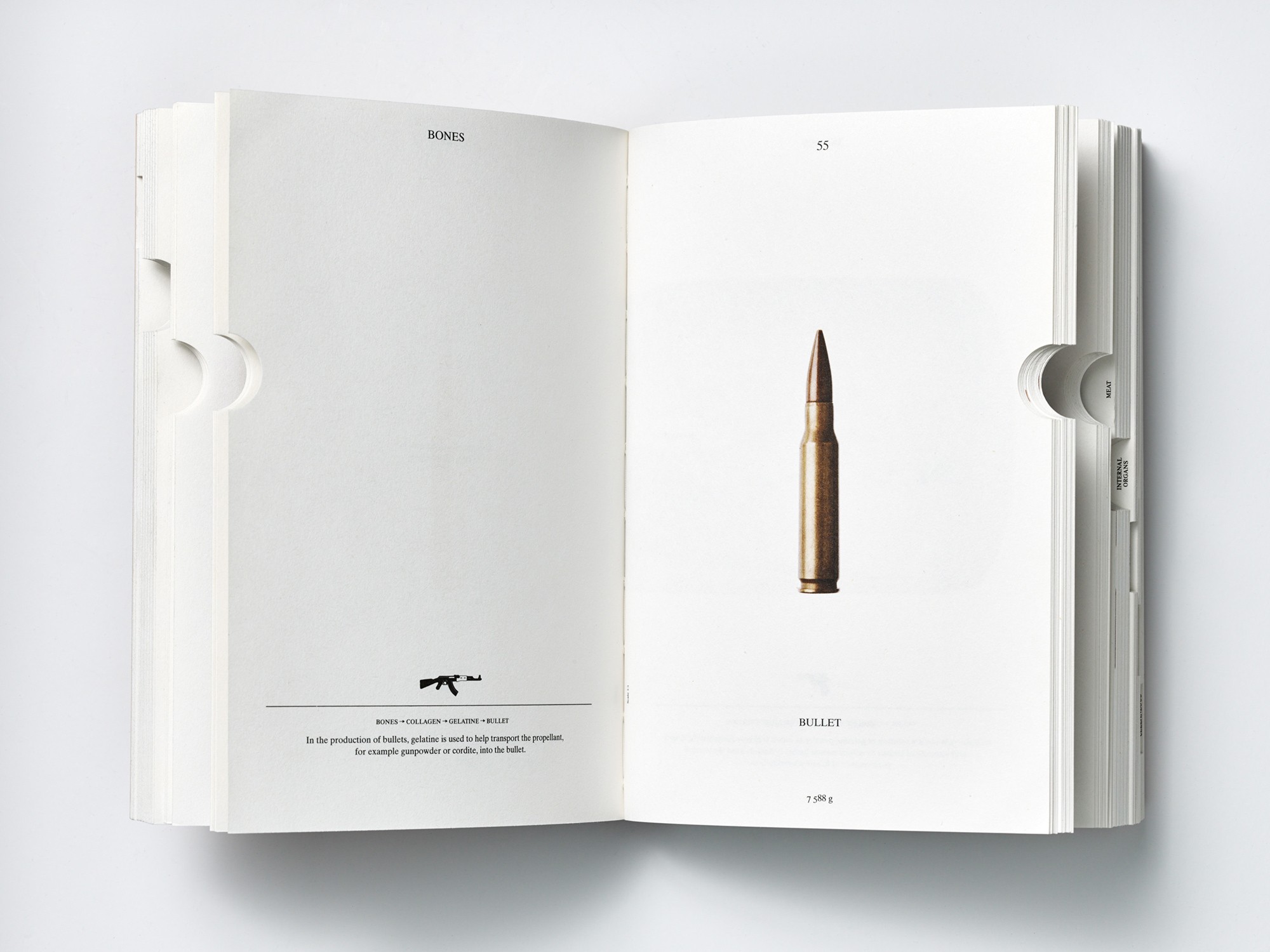
Απόσπασμα από το PIG 05049 | Πηγή εικόνας: freight.cargo.site
Μία διαφορετική προσέγγιση στο ύφασμα
Το 2016, σε συνεργασία με την Enkev, επιμελείται τον σχεδιασμό τής Flax Chair*. Η καρέκλα, αν και φαίνεται καθ’ όλα απλή, είναι κατασκευασμένη από έναν συνδυασμό εξ ολοκλήρου φυτικών υλικών. Τα στρώματα υφαντού υφάσματος από λινάρι και το πιληματοποιημένο λινάρι με ξηρή βελόνα, συνδυασμένα μεταξύ τους, οδήγησαν στη δημιουργία ενός τελικού αποτελέσματος που δεν χάνει σε σταθερότητα, όγκο και υφή, ενώ, παράλληλα, έρχεται σε πλήρη συμμόρφωση με τις αρχές της βιωσιμότητας, λόγω των βιοδιασπώμενων πρώτων υλών. Επιπλέον, παρά την περιπλοκότητα της κατασκευής και των υλικών, το προϊόν είναι οικονομικά προσιτό, κερδίζοντας το στοίχημα της επαφής με τις ανάγκες του καταναλωτή.
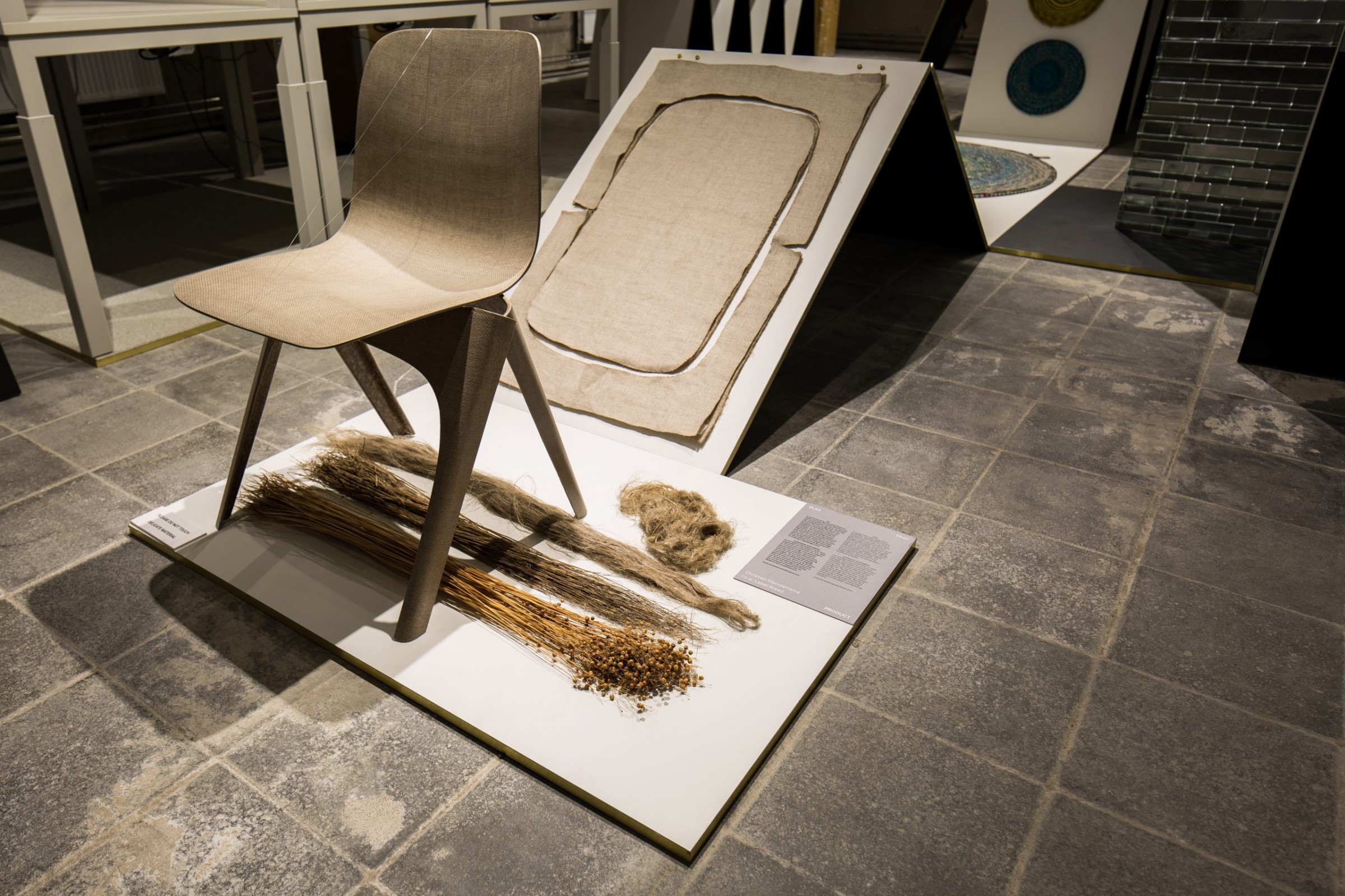
Flax Chair | Πηγή εικόνας: tlmagazine.com
Το ερευνητικό έργο Fibre Market (2016) –συνεργασία των Wieland Textiles και Valvan Baling Systems στην κατασκευή ενός μηχανήματος που είναι σε θέση να αναγνωρίζει τις ίνες των υφασμάτων, ταξινομώντας, στη συνέχεια, τα ρούχα βάσει του υλικού τους– συμμετείχε στην έκθεση του 2016, Fear and Love, στα πλαίσια της οποίας σαρώθηκαν 1000 μάλλινα πουλόβερ. Η Meindertsma, χάρη στο μηχάνημα, μπόρεσε να συγκρίνει τα αποτελέσματα των σαρώσεων με τις αναγραφόμενες πληροφορίες στις ετικέτες των πουλόβερ, παρατηρώντας πολλές ανακρίβειες σχετικά με τις πρώτες ύλες, γεγονός που είναι προβληματικό αναφορικά με την ανακύκλωση μη-ανακυκλώσιμων υλικών, εν αγνοία των καταναλωτών.
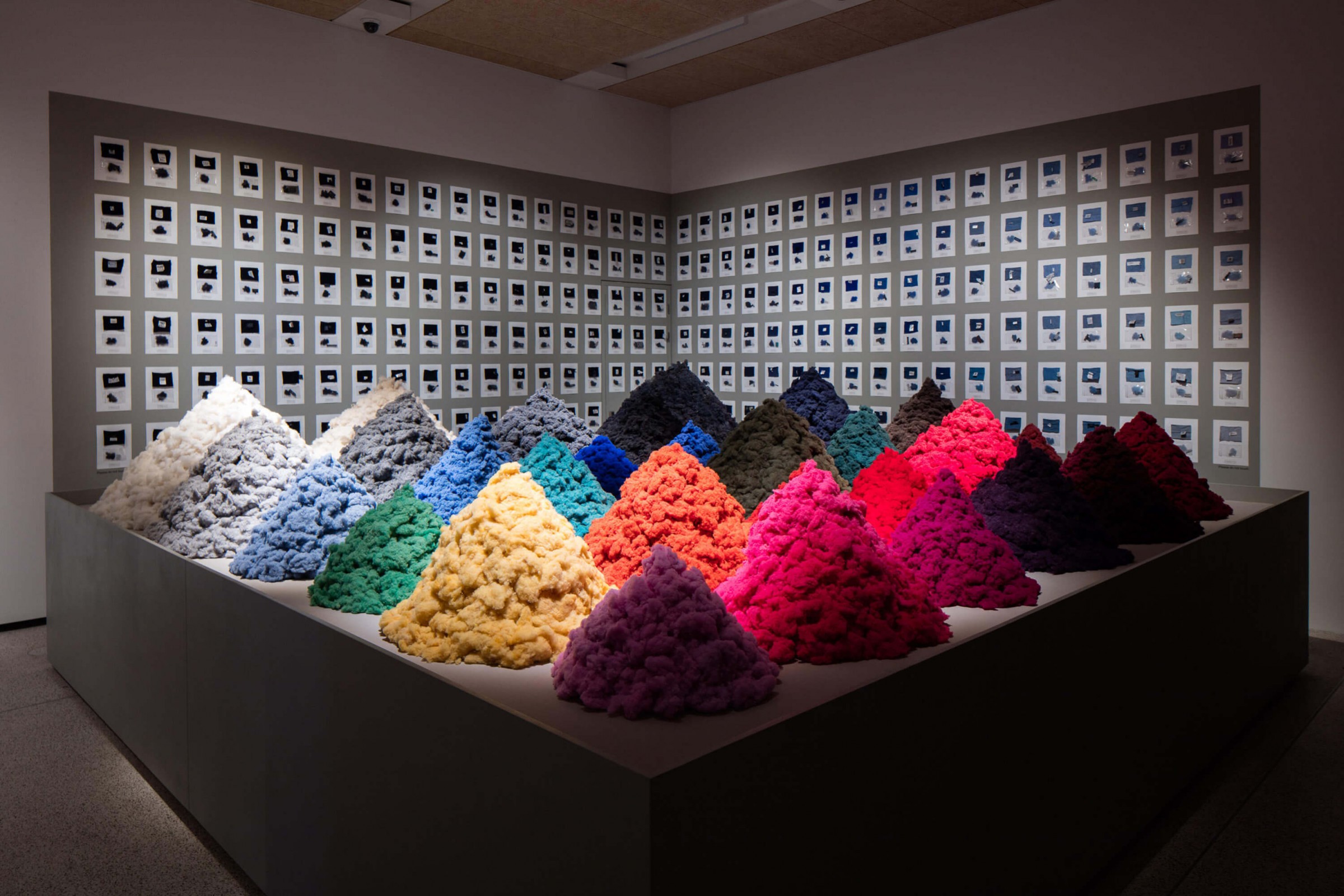
To πρότζεκτ Fibre Market στο London Design Museum (2016) | Πηγή εικόνας: image.architonic.com
Η επί χρόνια ενασχόληση της Meindertsma με την αξιοποίηση διαφόρων πρώτων υλών και τη διαδικασία παραγωγής των υφασμάτων δεν σταματάει εδώ. Το 2020, στο βιβλίο De Zachte Stad, η designer αναδεικνύει τις δυνατότητες του μαλλιού που προέρχεται από κοπάδια του Ρότερνταμ. Έχοντας περάσει η ίδια δύο χρόνια έρευνας για το συγκεκριμένο μαλλί, που συχνά θεωρούνταν κατώτερης ποιότητας, απέδειξε ότι το μαλλί είναι ικανό να αξιοποιηθεί σε πολλές χρήσεις πέραν της συμβατικής υφαντουργίας, βοηθώντας στη μείωση των απορριμμάτων που δημιουργούσε η επί χρόνια συσσώρευσή του.
Το Sharing Elements
«I’m really interested in how we are all connected, and where things come from. So sometimes by taking things apart you can find out what its ingredients are, what its essence is. I see connections in everything all the time, like: Where does it come from? Where does it go? Who made this for me? What is its impact?». Τα παραπάνω λόγια της Meindertsma φαίνεται να βρίσκουν αντίκρισμα στο πρότζεκτ Sharing Elements, για την Dutch Design Week του 2021, καθώς, από τα επιμέρους αντικείμενα, τώρα η ίδια φτάνει στον άνθρωπο. Ερωτήματα όπως: “από τι είμαι φτιαγμένος; από πού προέρχονται τα στοιχεία μου και πού πηγαίνουν; και πώς σχετίζομαι με όλα αυτά τα στοιχεία της ύλης γύρω μου;”, αποτέλεσαν την αφορμή για το installation (σε συνεργασία με τους Joel Gethin Lewis και Reza Ali), το αποτέλεσμα του οποίου είναι μία εντυπωσιακή εγκατάσταση που επιτρέπει στον θεατή, μέσω του συνδυασμού ψηφιακών και αναλογικών μέσων, να οπτικοποιήσει τα στοιχεία που τον συνθέτουν. Πώς; Με τη δυνατότητα αντανάκλασης του κάθε θεατή ως ένα διαδραστικό σύννεφο στοιχείων, από τα οποία ο ίδιος αποτελείται. Όμως, η άκρως εντυπωσιακή και πρωτότυπη εγκατάσταση δεν σταματούσε εκεί, αφού τη συνόδευε παράλληλη έκθεση που απεικόνιζε τα στοιχεία στο σώμα μας, τη χρησιμότητά τους, καθώς και τη διαθεσιμότητά τους στη γη.
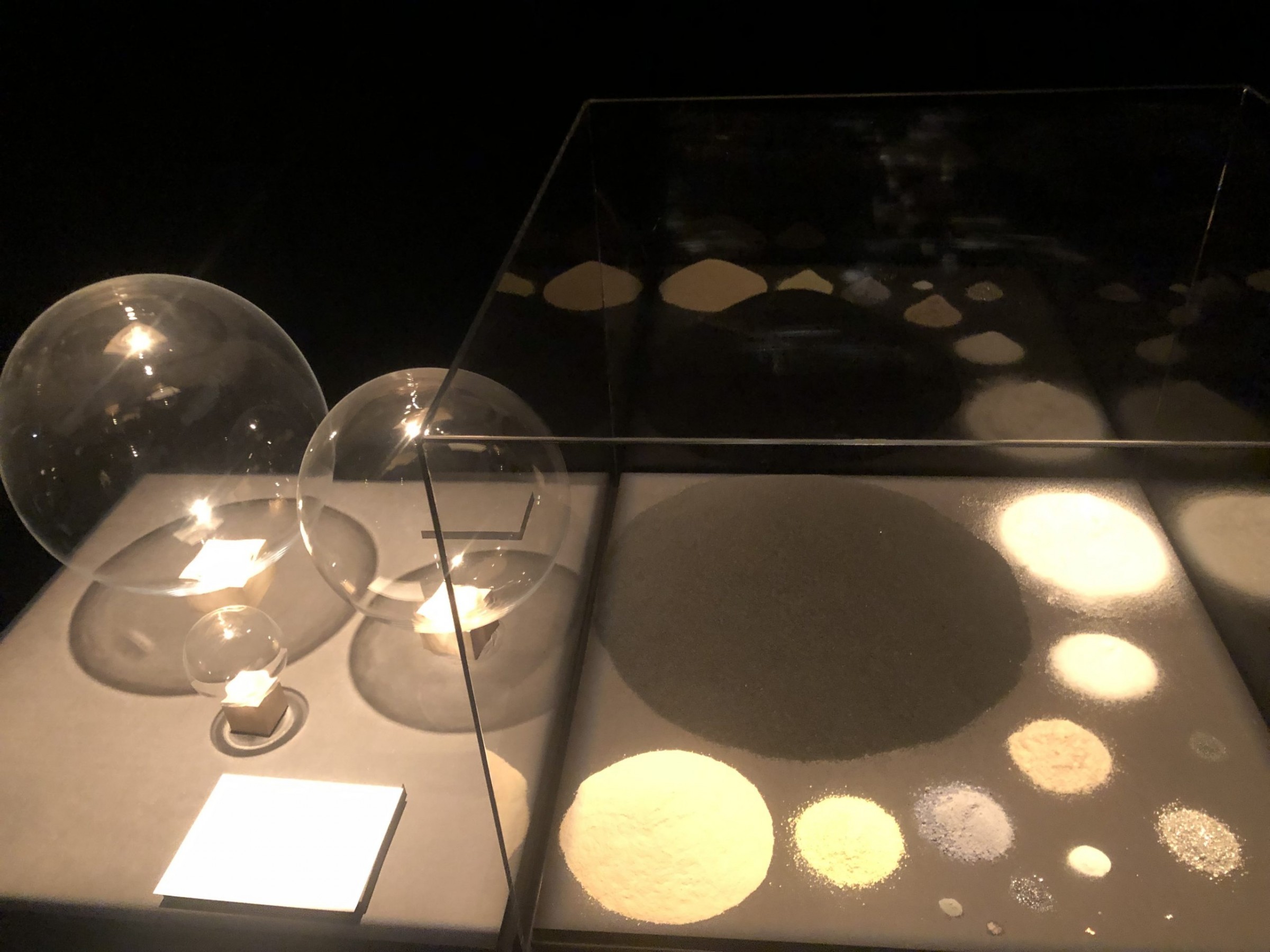
Sharing Elements (Από την Dutch Design Week) | Πηγή εικόνας: design.udk-berlin.de
Το Fertile Grounds είναι το τελευταίο πρότζεκτ που επιμελείται η ίδια και φιλοξενείται στο Μουσείο Fries. Το έργο, που ξεκίνησε το 2022, δεν είναι τίποτα άλλο από ενός είδους σεμινάριο σχετικά με την εκμετάλλευση των ολλανδικών τυρφώνων, με σκοπό την περαιτέρω ανάπτυξη της καλλιέργειας ελωδών γαιών (paludiculture). Η τελευταία, μάλιστα, θεωρείται ότι θα συμβάλει στην εκ νέου διαβροχή των τυρφώνων και τη μείωση των εκπομπών αερίων του θερμοκηπίου. Η έκθεση-σεμινάριο της Meindertsma απευθύνεται σε όλους όσους ενδιαφέρονται να συνδυάσουν νέους τύπους καλλιέργειας, περισσότερο φιλικής και ωφέλιμης για το περιβάλλον, διαπλέκοντας με τον πιο αποτελεσματικό τρόπο το design με την πρακτική εφαρμογή και αξιοποίησή του, ανοίγοντας, παράλληλα, τον κλάδο στο ευρύ κοινό.
*Η Flax Chair εκτίθεται στη National Gallery of Victoria and Boijmans van Beuningen του Ρότερνταμ.
Πηγές/Περαιτέρω ανάγνωση
S. Dorkenwald. The documentary designer. Από: the-nomad-magazine.com
Περισσότερα για το έργο της Christien Meindertsma, στο: christienmeindertsma.com/.




